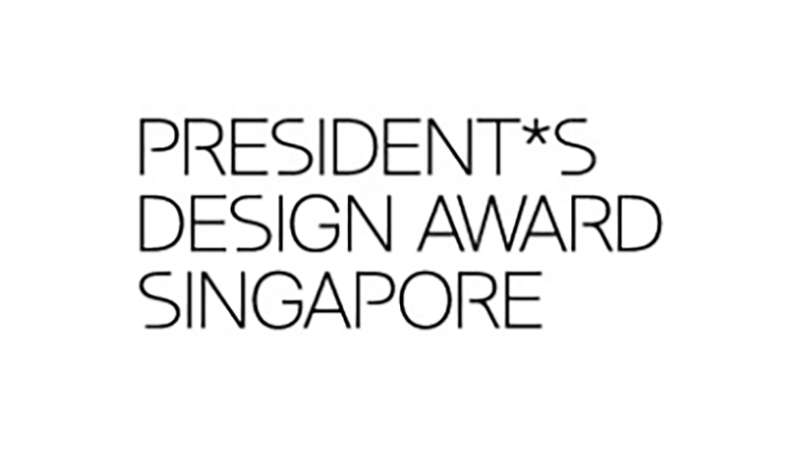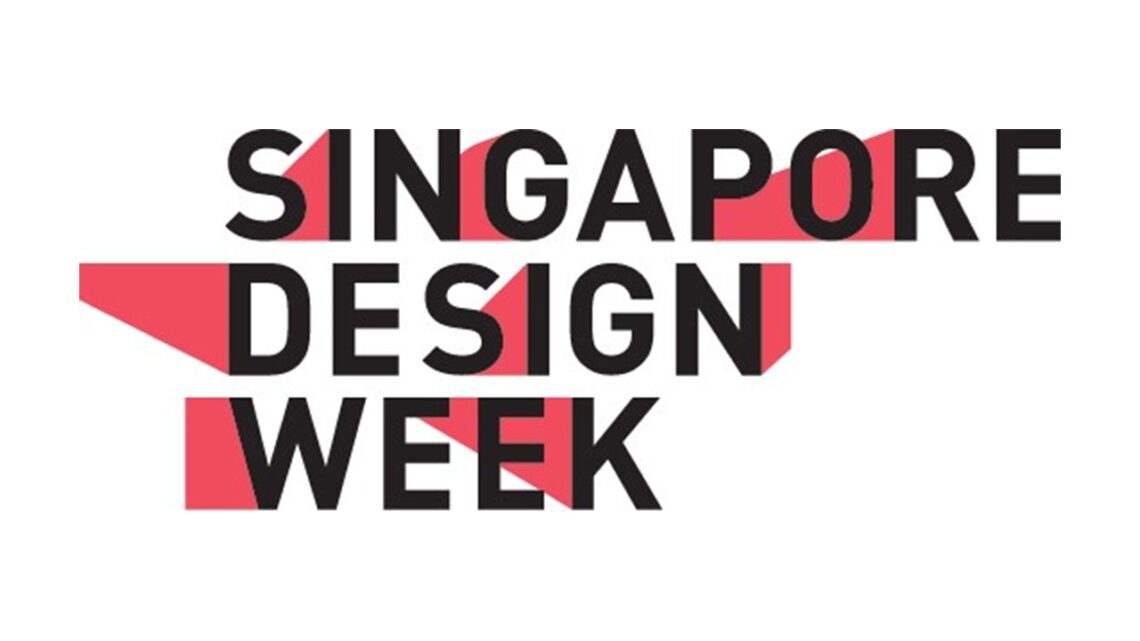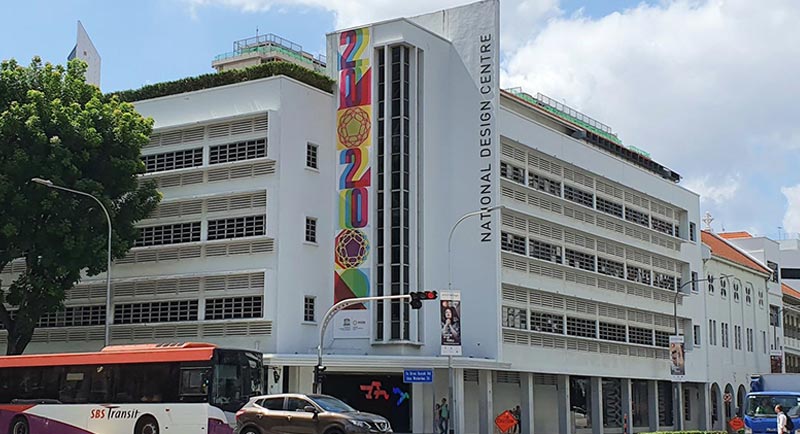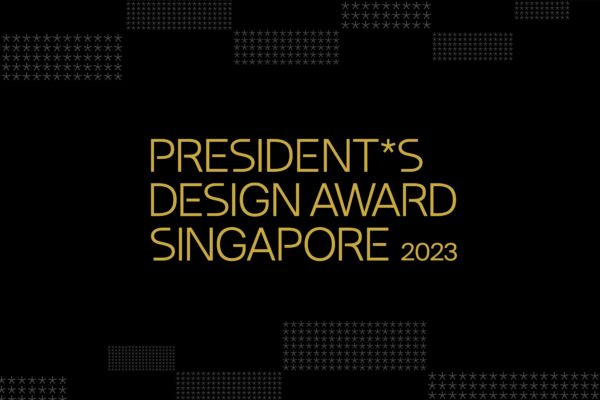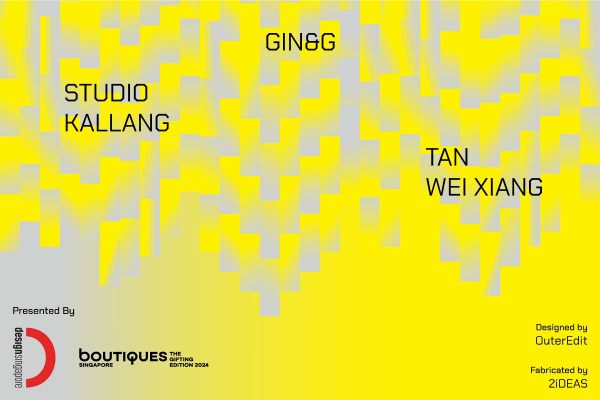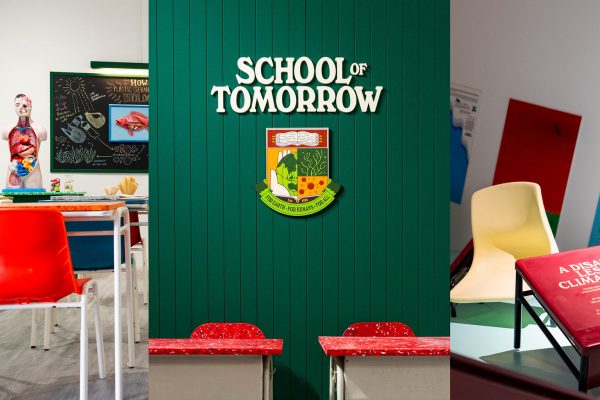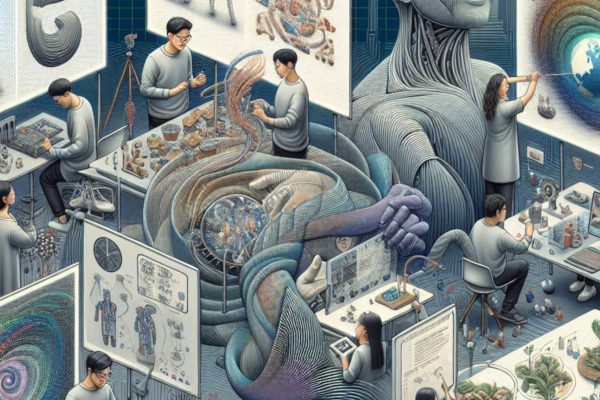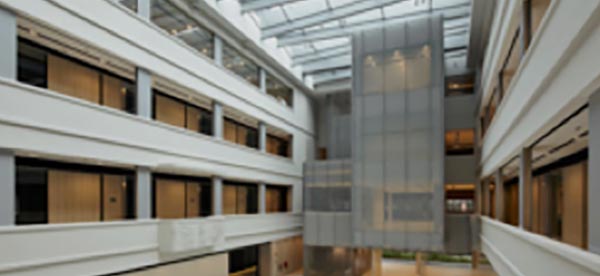As the CEO of DP Architects, one of Singapore’s largest architecture practices, Seah Chee Huang navigates professional and corporate leadership with a strong impetus to deliver purposeful outcomes for people and planet. Beyond the studio and the boardroom, he is bringing that same drive to Singapore’s classrooms, having led the inaugural National Design Project for students in 2023.
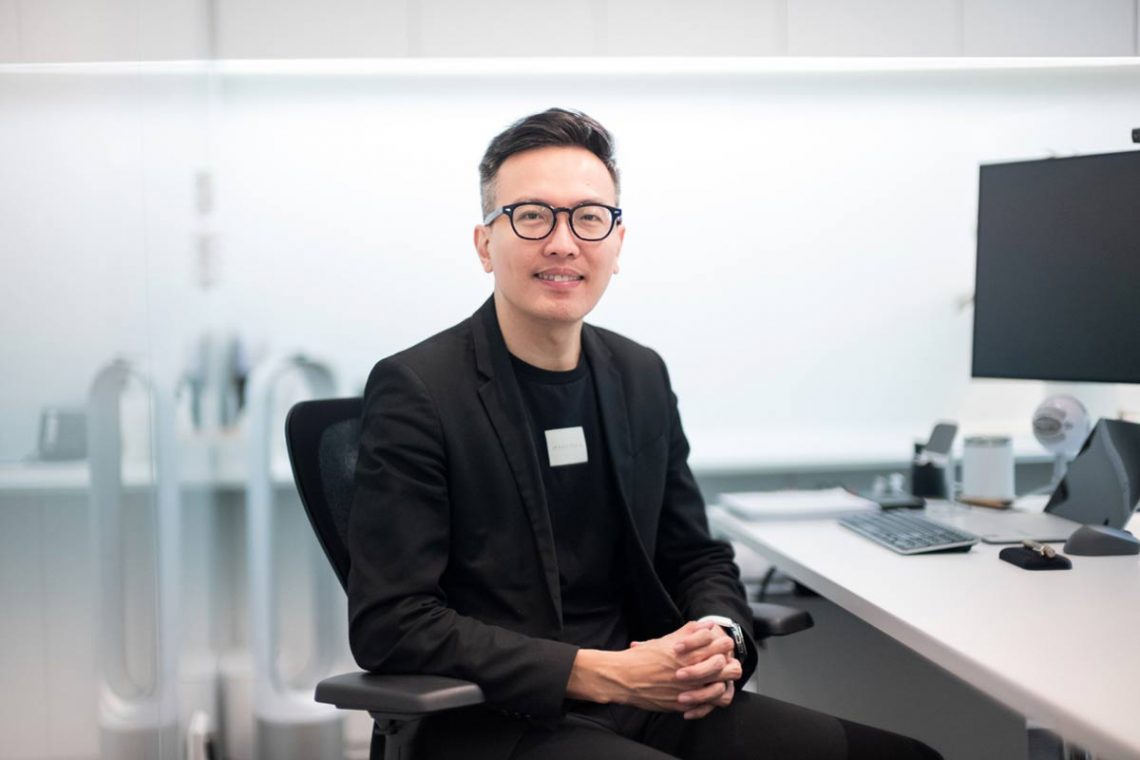
Article by Narelle Yabuka.
Taking on the role of CEO at one of Singapore’s largest architecture and multi-disciplinary design firms (and a multinational one at that) is no small undertaking. Imagine doing so at the height of the pandemic, with project delays, remote work, staff movements, and uncertainties buffeting economies around the world.
Add to the mix the rapidly evolving digital aspects of architectural practice and the reckoning of the built environment industries with the scale of their input to global carbon emissions (amounting to 39% of the total energy-related carbon emissions). Then you’ll have a sense of the immense challenges faced by architect Seah Chee Huang when he ascended to a senior leadership role at DP Architects in 2021.
“There were quite extraordinary challenges, not just for myself but for the entire group and our team leaders,” reflects Seah of the last few years, with his affable demeanour and energetic spirit still impressively intact on the other side of the pandemic. He adds, “But the COVID crisis gave us an opportunity to really look deeply at ourselves. In my new role I was asking how, while we tread through the challenges, we can pull the group together to not just stay agile and relevant, but also to create opportunities for us to grow and better ourselves?”
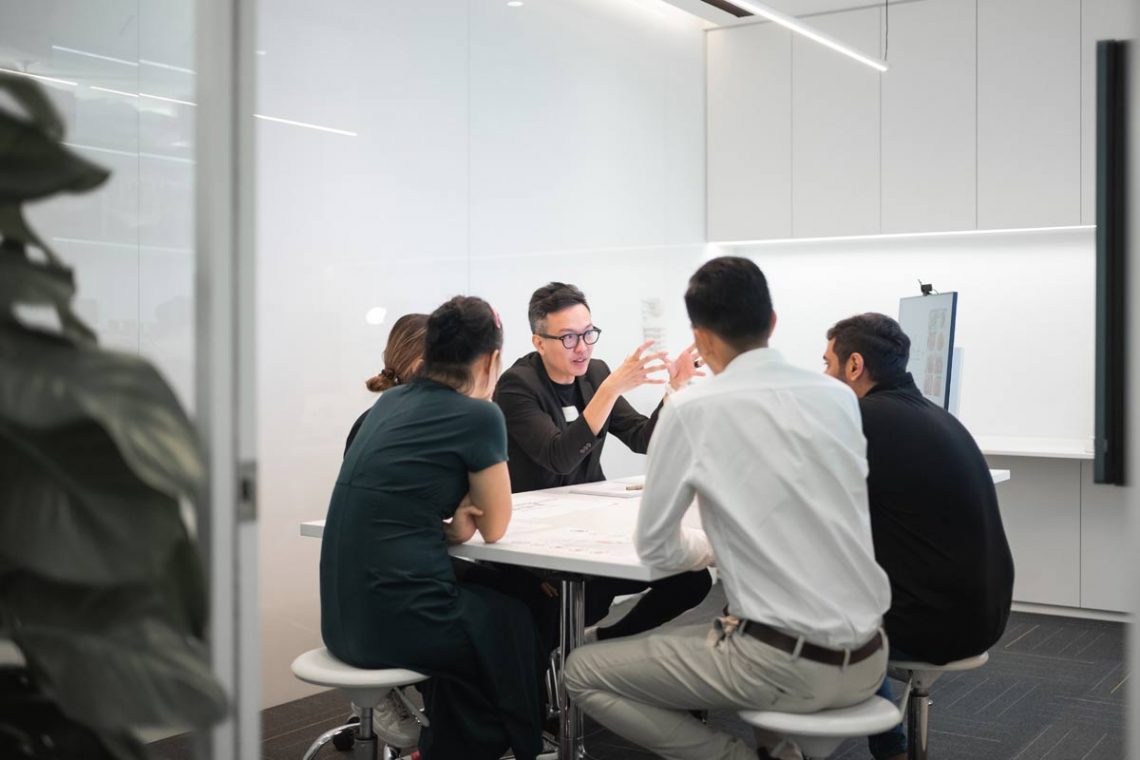
Leading with purpose
By today’s count, the DP Architects group of companies refers to a constellation of around 1,000 people in 17 offices across 11 countries reaching from Indonesia to the UK. Aside from architecture per se, DP works in eight major domains of related expertise in specialist subsidiary companies focused on project management, interior design and spatial planning, engineering and building services design, building envelope design, landscape architecture and arboriculture, lighting design, sustainable design, and urban planning and design.
Seah became Deputy CEO of DP Architects in 2020 and CEO in 2021 after demonstrating his capacity as a director and design lead for many years. Tackling the multiple crises of the era head on, he used his new role to set in place strategic directions for the firm that consider its viability and competitiveness, its responsibility, its culture, and its potential to influence development in the region. But never far from his mind, despite the managerial load of his new role, has been a long-held impetus to engage with people and effect positive change through his creative capacity as an architect.

Seah strongly believes that architecture is an extension of our value system. From his work through the years on national icons such as Singapore Sports Hub, to major community-oriented integrated developments such as Our Tampines Hub, to small-scale impactful work such as the eldercare facility Goodlife! Makan (which earned DP Architects a President*s Design Award [P*DA] ‘Design of the Year’ accolade in 2020), he has maintained an innate interest in social and community wellbeing and potential, alongside a strong concern about sustainability and environmental health.
Most recently, the interest in human vitality and potential has manifested in an initiative to develop the creative capacity of Singapore’s youth via the new National Design Project (NDP) for general education students – an offshoot project of the DesignSingapore Council (Dsg) initiated Design Education Advisory Committee (DEAC), of which Seah is a member. Though the distance between the classroom and the boardroom is considerable, Seah navigates both worlds with an untiring commitment to purpose.
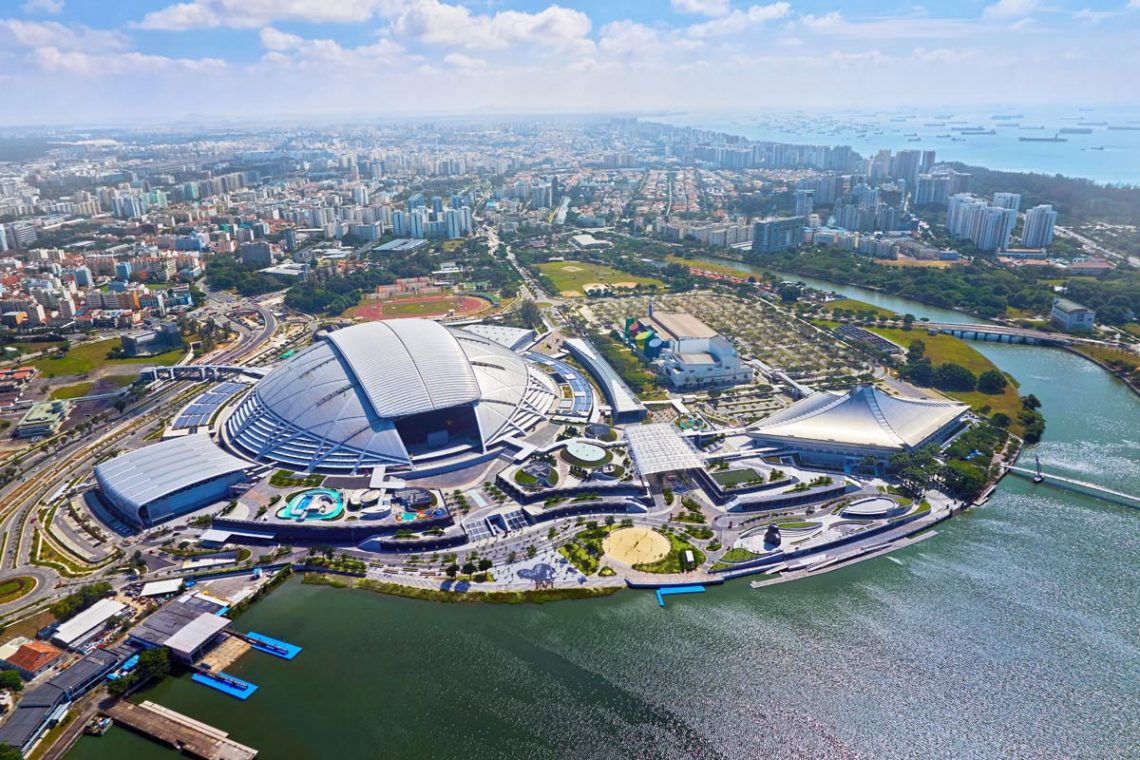
The ‘Green, Well, Tech’ way forward
Fresh in his role as CEO, Seah coordinated the development of strategic pillars for the entire DP Architects group as it navigated and emerged from the pandemic. These included strategies to strengthen the influence of the Singapore office as the firm’s ‘nerve centre’ for design; ramp up internationalisation (especially in Southeast Asian neighbours Vietnam and Thailand); reinforce DP’s multidisciplinary expertise and evolve toward a more agile interdisciplinary workforce; bolster the company’s internal culture and its relationships with partners; and develop initiatives for progress on the fronts of ‘Green, Well, and Tech’ (GWT).
The GWT initiative of 2021 began as a way of bringing together DP Architects’ sustainability experts from the group’s various disciplines to enable synergistic thinking across the domains of practice. These experts were charged with providing guidance and setting sustainability objectives for both projects and operations – taking into account wellbeing and harnessing technology in the process. But in tandem with industry shifts at large, GWT has evolved to become a key driver for the firm. As Seah describes, “GWT extends from our core values and strategically unifies our approach, actions, and capabilities, to drive our multidisciplinary design practice towards purposeful and innovative solutions for better-than-sustainable outcomes.”

Following the COVID pandemic, stakeholders in the built environment industry are increasingly focusing on sustainability as one of the primary vehicles of recovery and transformation. Just three years ago, most clients regarded sustainability aspects as optional. Today, more of them see the integration of a robust sustainability ethos as not only an integral part of their design and projects but even their organisations.
– Seah Chee Huang
In Seah’s experience, factors such as energy efficiency and operational carbon footprint are topping the list of developers’ sustainability priorities. It’s a positive step, but there’s clearly a long way to go.
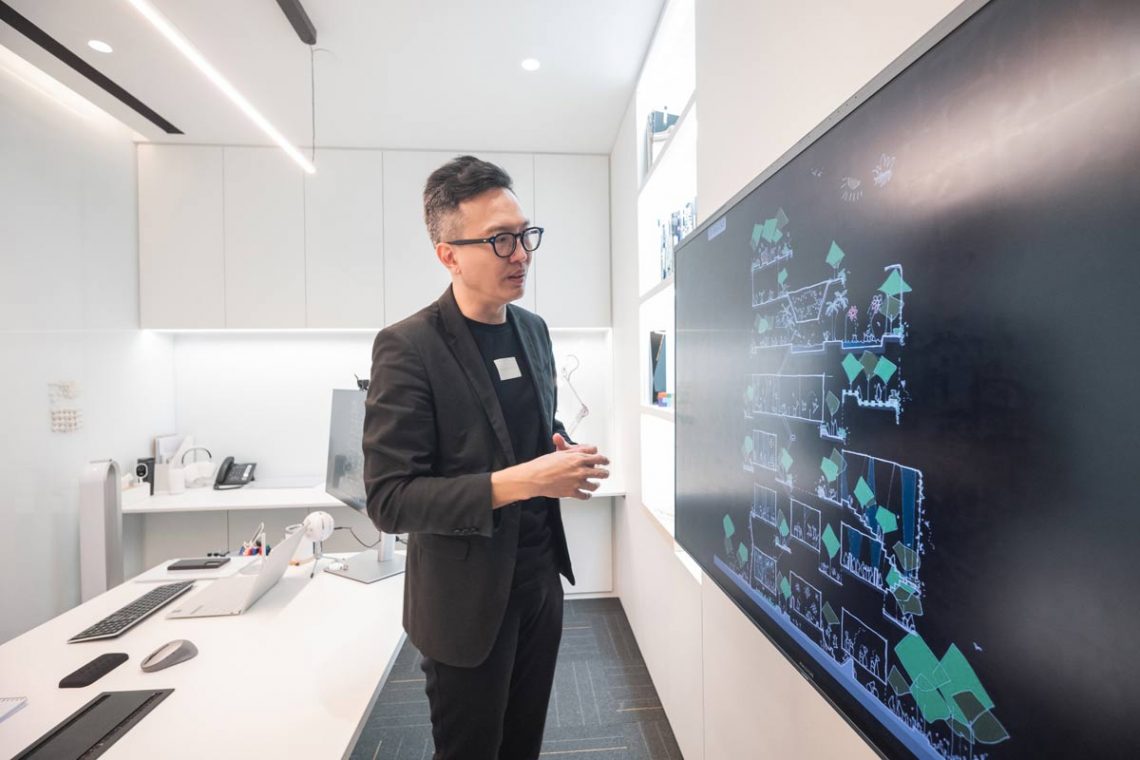
Keen to deliver better than baseline sustainability outcomes, Seah tasked the GWT team with updating and developing an internal manual for DP Architects’ Attributes of Purposeful Design – an assessment and design tool formulated by Seah in 2015 that looks at sustainable outcomes. This tool allows every project to be assessed for its performance across a raft of sustainability criteria that include, but extend beyond, environmental concerns: energy efficiency and decarbonisation; whole-life carbon; ecology and habitat; water conservation; wellbeing; social and community; resilience; and intelligence and productivity.

Being sustainable is no longer enough. We believe that since all development inevitably consumes resources and generates a carbon footprint, our responsibility is to enhance both human and natural systems through a more purposeful and responsible design process.
– Seah Chee Huang
Taking the impetus further, Seah and his colleagues in leadership are holding the firm to account by collecting data to evaluate project performance based on these criteria. Over time, such data will not only allow DP Architects to optimise its design approach, but also to more strongly make that case for greater ambition for sustainable outcomes among clients.
Using the considerable capacity of the firm to its advantage, Seah has also prioritised the development of digital tools to help the group with achieving its sustainability targets and maximising productivity.
These include generative AI tools to automate the design and planning of elements ranging from facades to data centre layouts for maximum efficiency and minimum carbon footprint; and a platform for simplifying the integration of smart technology with buildings and cities. The latter is being developed by Spaceworx – a new company created by DP Architects and Eutech Cybernetics – and envisions supporting the transition to low-carbon operational outcomes through simplified access to smart workplace and building technology.
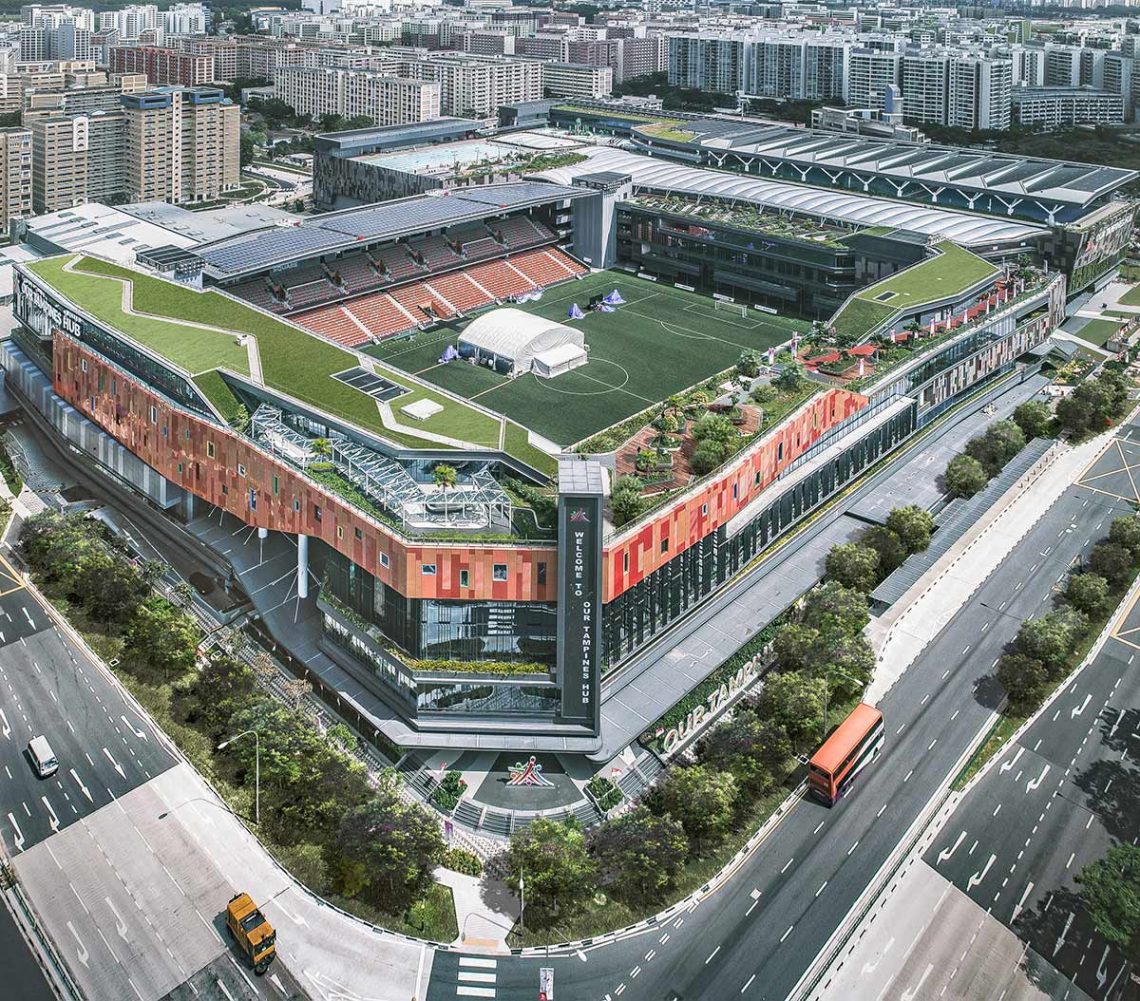
Designing creative minds
While the people-centric considerations in which Seah is known to invest much of his energy have manifested across numerous DP Architects projects – particularly in the creation of community spaces to support social activities – the last few years have also seen him dedicate time and attention to another aspect of the human experience: the development of creative minds. His role in the DEAC, which aims to seed design literacy and confidence in the national consciousness, was a comfortable evolution for Seah, who had served as an adjunct design tutor at his alma mater, the National University of Singapore, for over a decade.
“It was quite an incredible feat to bring together such a diverse group of leaders from a variety of sectors, ministries, agencies, and institutes of higher learning, and to harness this collective commitment to design education,” says Seah of the DEAC, which concluded its first term under the chairmanship of Low Cheaw Hwei in 2022. He continues, “The whole idea is the belief that design education should be part of the mainstream curriculum. Singapore needs creative problem solvers, and we can start young in terms of nurturing creative minds.”

There’s a report that records our findings, but if I were to crystallise the vision of the DEAC in my own words, it’s the idea of evolving Singapore from a ‘nation by design’ to a ‘nation of design’. The space of direct influence and intervention is education.
– Seah Chee Huang
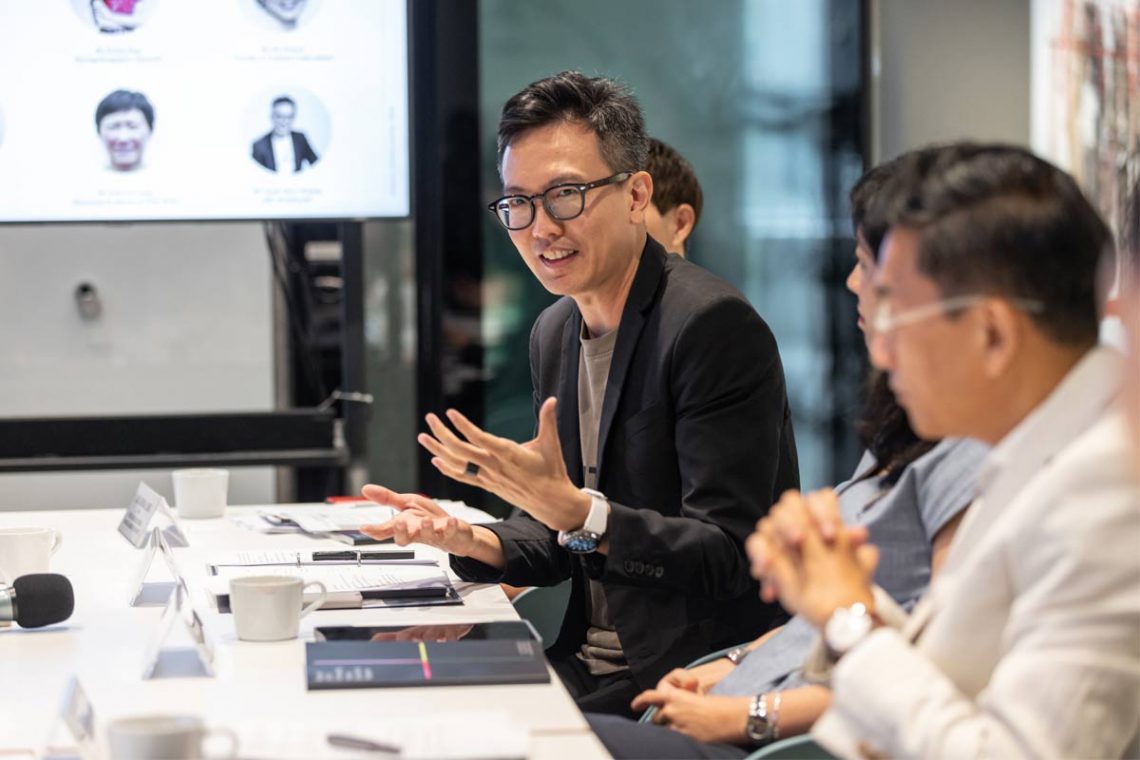
The idea for a National Design Project (NDP) emerged from Seah’s input to the DEAC and discussion with Dsg. Seah explains, “Singapore has a National Science Experiment for students, national sports and games, and other challenges for youths, but there hasn’t been something that allows the younger generation to really understand what design is, or the idea of a ‘project’.”
Second nature to design students, the project is a uniquely valuable vehicle for developing a range of skills. Explains Seah, “The idea of project-based learning is so powerful. A project involves research, understanding context, trying different design processes and methodologies, and mentorship. But equally powerful as that journey is the manifestation of an outcome – be it a product or a service. Students can discover that it’s possible to testbed or build something.”
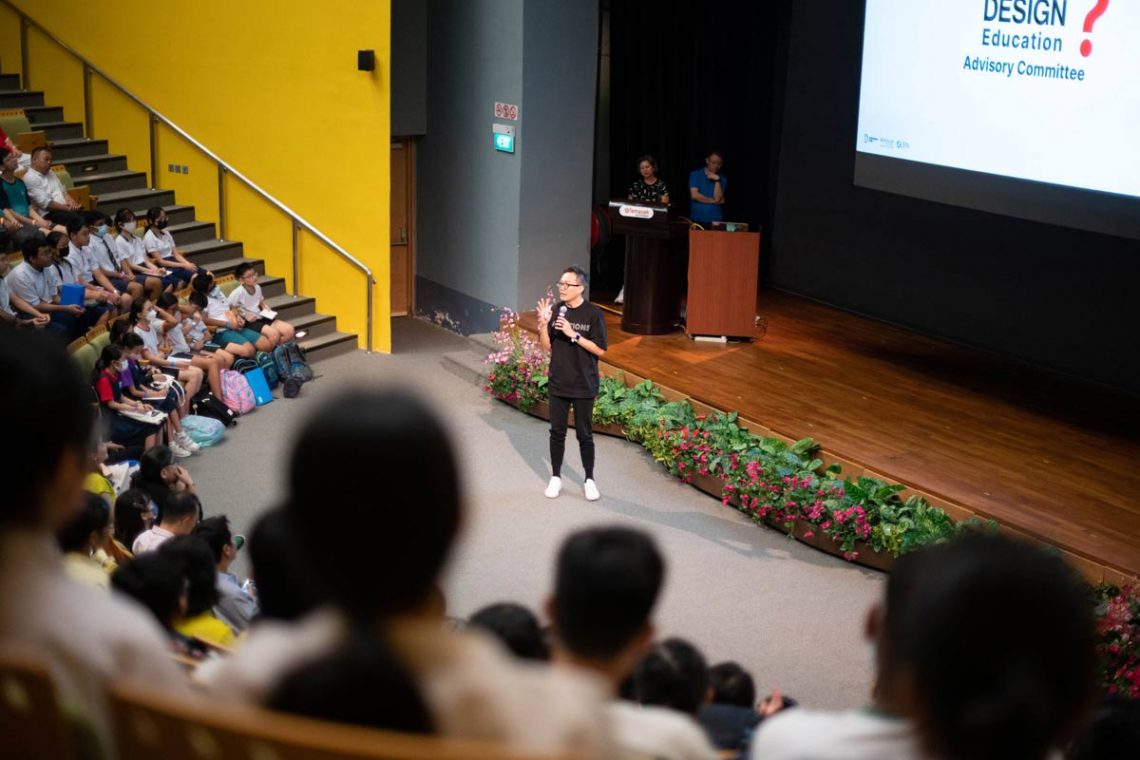
Themed ‘Design for Wellness’, the NDP 2023 was organised by Temasek Polytechnic’s School of Design and supported by Dsg, with Seah on board as the Project Advisor, fellow DEAC member Pann Lim (Co-founder and Creative Director of Kinetic Singapore) as Curator, and a team of mentors from the design industry. The outcomes were exhibited at the Dsg-organised Design Education Summit at The Star Performing Arts Centre in November 2023. Participating students presented their projects in person to Guest of Honour Mr Chan Chun Sing, Minister for Education.
Concepts entered by the 50 teams from 32 participating institutions included a facial recognition kiosk that rewards healthy choices at the school canteen with a points system (by students from Ai Tong School); a community centre for independent activities for seniors (by students from St Joseph’s Institution); and an app linking junior college students to opportunities such as volunteer work, internships, scholarships, and talks (by students from Victoria Junior College, Raffles Institution, and Hwa Chong Institution).
For Seah, seeing the manifestation of the inaugural NDP was deeply rewarding. “The energy of the students was infectious. You could really feel their enthusiasm for their projects and more importantly, their big, hairy, audacious ideas, to change our world for the better,” he says.

We must celebrate the creative energies and aspirations of our future generations – to allow them not just to learn the important skill set tied to creative problem solving, but to empower them to imagine the future and to increase their sense of agency to shape things through and by design.
– Seah Chee Huang
An ongoing legacy
Certainly, the participating students would be impressed to learn that the professional work of their NDP Project Advisor and the DP Architects team is not only award winning, but also inspiring similar developments overseas – an indication of how designs birthed from the particular conditions of Singapore can prove inspirational beyond our shores.
Singapore’s track record of creating highly dense yet highly liveable urban environments is valued internationally, acknowledges Seah, especially in developing countries and cities. But there is particular interest in the integrated community hubs designed by DP Architects, such as Our Tampines Hub and the recently completed One Punggol and Bukit Canberra. “There is a lot of interest in the potential impact of these projects on building resilient communities,” emphasises Seah. He also mentions how DP Architects has hosted international government delegates and private-sector groups on visits to the firm’s projects in Singapore.
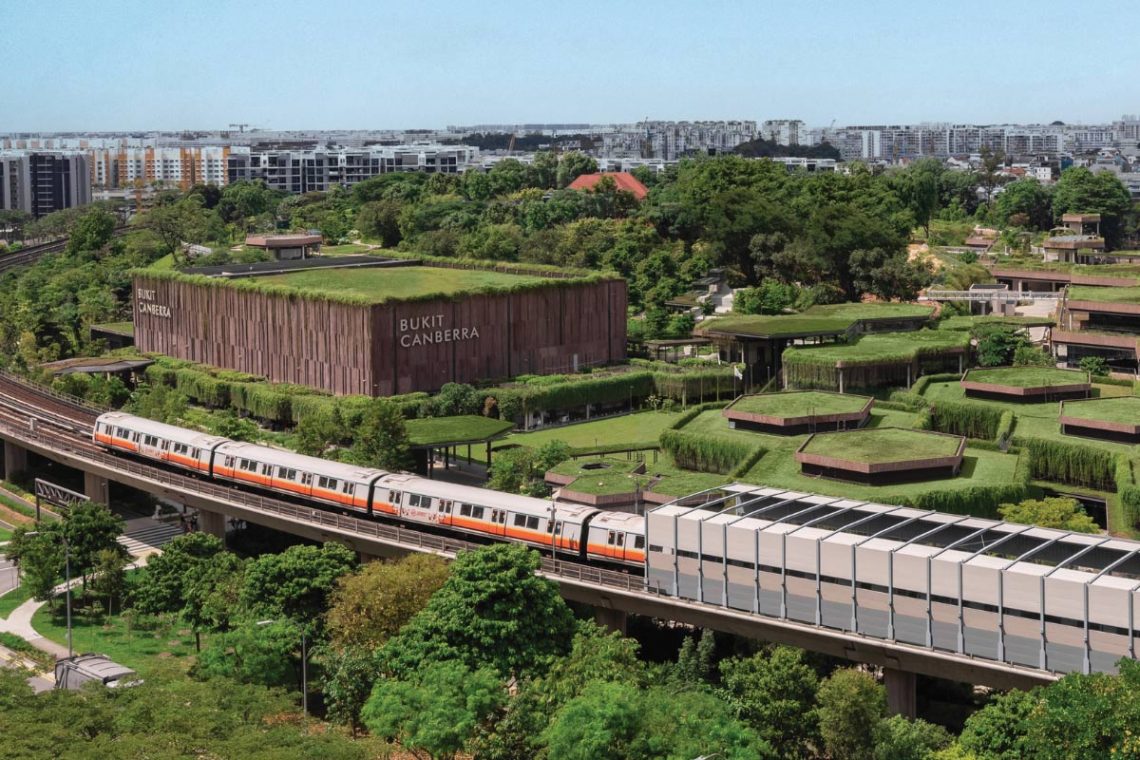

Gone are the days of primarily single-use plots. Complex mixed use with seamless integration between public and private realms, people, and place, in the creation of a biophilic, healthy, and even regenerative urban environment – these are highly valuable and exportable strategies that we see being in high demand in the cities we have worked in.
– Seah Chee Huang
He acknowledges, however, the challenges of realising integrated developments in contexts where ground-up will and top-down policy require closer alignment and collaboration. “What has been interesting though is that in China and some of the other countries, similar forms of integrated developments are not solely public-sector driven, as they are in Singapore,” he says. In China, DP Architects is designing two integrated developments for private-sector clients – one in Shanghai, and one in the China-Singapore Guangzhou Knowledge City. “For us, while our exploration of such synergistic hubs began here in Singapore, it is also exciting to apply key learning points from these overseas projects to projects back in Singapore, so that hopefully, we can achieve a new level of public-private-people participation and synergy,” he says.
For now, we will await with much anticipation the release of DP Architects’ design for the redevelopment of one of its earliest high-rise mixed-use projects – one that is stamped onto Singapore’s national psyche. Opened in 1972, the Golden Mile Complex was designed by Design Partnership – the predecessor of DP Architects founded by William S.W. Lim, Tay Kheng Soon, and Koh Seow Chuan. In 2021, the project’s merits and significance were recognised by the Urban Redevelopment Authority (URA) with the gazetting of the building for conservation – reason for a collective sigh of relief among Singapore’s architecture buffs given that the collective sale of the property was imminent.
The new owners (a consortium of developers) have engaged DP Architects to restore and redevelop this icon of Singapore’s nation-building years – an opportunity whose significance is not lost on Seah. “I’m very privileged to be one of the team members working on it,” he says, adding that DP Architects is working closely with the client, the URA, partners such as architectural conservation consultancy Studio Lapis, and a host of specialists to give this beloved landmark a new lease of life.
As for what we can look forward to at this special project, Seah is keeping his cards close to his chest: “I’ll keep you in suspense for now. All I can say is that there will be exciting things to look forward to, from a refreshed programme and outlook, to sense of place, and new experiences. We hope it can continue to inspire communities for many generations to come.”
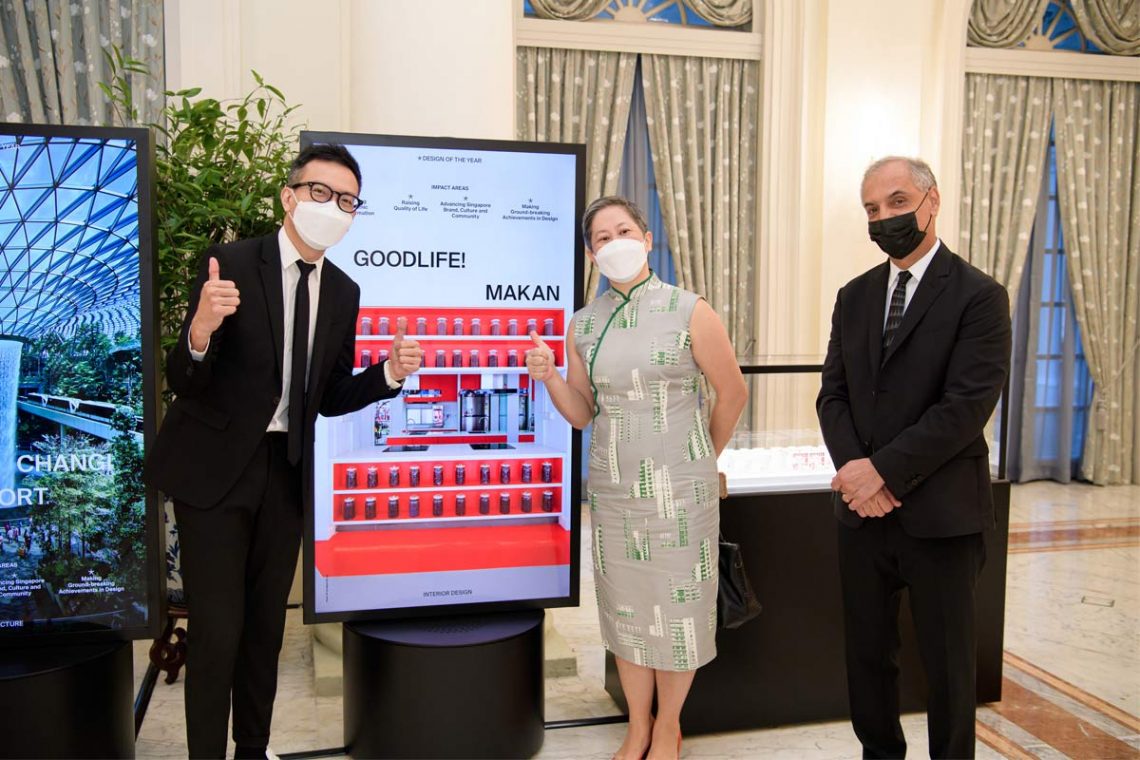
Read our unfolding series of stories on creative discovery and making life in Singapore ‘Better by Design’.
